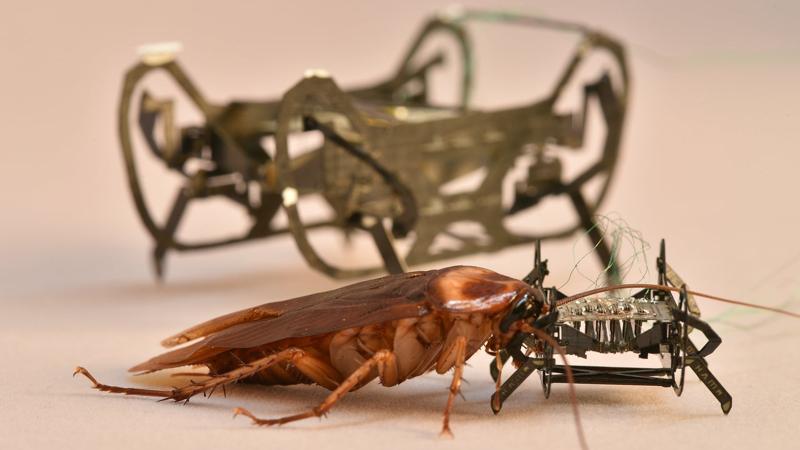A new study suggests that the weakening of Earth’s magnetic field around 591 million years ago may have played a crucial role in the evolution of life. The research, published in the journal ‘Geology’, analyzed ancient rocks from South Africa and Brazil, revealing a significant weakening of the magnetic field during the Ediacaran Period (about 635 million to 541 million years ago). This period is associated with the ‘oxygenation event’, when the atmosphere and oceans became more oxygen-rich, leading to the evolution of larger and more mobile life-forms.
Results for: Evolution
Cats are known for their ability to always land on their feet, but how do they do it? It’s a combination of physics and neurology. When a cat falls, it uses its flexible body and tail to twist and turn its body so that it lands on its feet. This is made possible by the cat’s righting reflex, which is a complex reflex that is tied to the conscious brain. The righting reflex helps the cat to sense its position in space and to move its muscles in a way that helps it to land on its feet.
An eight to 10-feet-long prehistoric salmon species called Oncorhynchus rastrosus stalked the seas and streams of the Miocene period. It weighed upwards of 400 pounds and had a formidable pair of front teeth that projected out from the sides of their mouths like tusks. This major dental update is detailed in a study published April 24 in the open-access journal PLOS ONE. Scientists are not exactly sure what these signature tusks were used for, but believe they were primarily used to fight off other salmon or predators.
Despite advancements in technology, robots still fall short of their animal counterparts when it comes to running. A recent study by an interdisciplinary group of researchers highlighted that while robots may have superior individual components, animals excel in their interconnected control and overall adaptability. This advantage is evident in animals’ ability to effortlessly overcome obstacles and navigate complex terrain. However, researchers are optimistic that robots will eventually surpass animals in running capabilities due to the rapid pace of technological development.
A new study suggests that deep-sea corals that lived 540 million years ago may have been the first animals to glow, far earlier than previously thought. This discovery pushes the origin of bioluminescence back by around 270 million years and places it around the time of the Cambrian explosion, when life on Earth evolved and diversified rapidly.
New research reveals that deep-sea corals may have been the first animals to emit light, dating back an astonishing 540 million years. This discovery pushes back the previous record for bioluminescence’s origins by nearly 300 million years. The study suggests that the ability to produce light through chemical reactions evolved independently at least 94 times in nature, serving various purposes such as camouflage, courtship, communication, and hunting.
New research suggests that deep-sea corals may have been the first animals to glow in the dark, approximately 540 million years ago. This discovery, published in the journal Proceedings of the Royal Society B, challenges previous assumptions that light production in animals evolved much later. The study’s findings indicate that bioluminescence, the ability to produce light through chemical reactions, may have played a significant role in the evolution of animal communication and predator-prey interactions.
New research indicates that bioluminescence, the ability of living organisms to produce light through chemical reactions, originated in animals at least 540 million years ago. This finding, based on an investigation of octocorals, an ancient group of marine invertebrates, predates the previous oldest known instance of the trait by nearly 300 million years. Experts believe bioluminescence has evolved independently at least 94 times in nature and serves various functions, including camouflage, courtship, communication, and hunting.
Newly discovered evidence suggests that deep-sea corals were the pioneers of bioluminescence, possessing the ability to glow in the dark as early as 540 million years ago. This study, published in the Proceedings of the Royal Society B, significantly advances our understanding of the origins of animal communication and the diversity of life in the deep sea. Marine creatures use bioluminescence for various purposes, including predator deterrence, prey attraction, and mate signaling. The study’s findings indicate that bioluminescence evolved around the time of the Cambrian explosion, a pivotal period in Earth’s history that witnessed the rapid diversification of life.
A groundbreaking study has uncovered the earliest known example of bioluminescence, the captivating natural phenomenon where living organisms emit light. Researchers have traced the origins of this mesmerizing ability to the soft, branching octocorals that graced the oceans a staggering 540 million years ago. This discovery revolutionizes our understanding of life’s early evolution and the intricate relationship between light and marine creatures.










